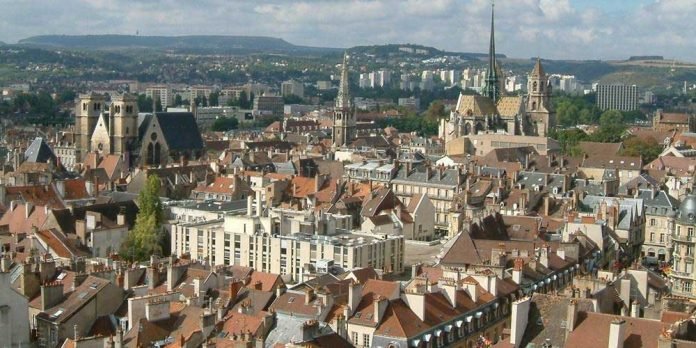A Stroll Through History: Dijon’s Charming City Center
Start your Burgundy adventure in Dijon, the capital of the Burgundy region in France. As you step into this captivating city, you’ll be greeted with cobblestone streets, timber-framed houses, and grand mansions that are remnants of Dijon’s rich past. Take a leisurely stroll through the charming city center, which is brimming with both medieval and Renaissance architecture. Every corner seems to tell a story, reflecting the city’s history as the former capital of the Duchy of Burgundy.
The Majestic Palace of the Dukes of Burgundy
Make your first stop at the Palace of the Dukes of Burgundy (Palais des Ducs de Bourgogne). This grand residence, which was the seat of the Dukes of Burgundy until the fall of the duchy, is a remarkable blend of architectural styles from the 14th to the 19th centuries.
Inside the palace, you’ll find the Musée des Beaux-Arts, the city’s art museum, which is one of the oldest museums in France. It boasts an impressive collection of fine arts including European paintings, sculptures, decorative arts, and more. Highlights include the tombs of the Dukes of Burgundy and a wide range of art from the Middle Ages to contemporary pieces. The courtyard and gardens of the palace are also a sight to behold and offer a peaceful respite from the city’s bustling streets.
Notre-Dame de Dijon Cathedral: A Gothic Jewel
After taking in the grandeur of the palace and its art collections, head to the Notre-Dame de Dijon Cathedral. This church, often referred to simply as Notre-Dame, is a magnificent example of Gothic architecture. Its facade is adorned with a mesmerizing array of sculptures and gargoyles, each with its unique expressions and features.
As you wander through the cathedral’s stunning interior, with its ribbed vaulting and radiant stained glass windows, you will feel the serene atmosphere that has comforted visitors for centuries.
The Owl of Dijon: A Symbol of Good Luck
One of the cathedral’s side doors features an inconspicuous, yet special, attraction – the Owl of Dijon. This small stone carving of an owl is one of Dijon’s most famous symbols. According to local legend, if you rub the owl with your left hand and make a wish, your wish is said to come true. This beloved tradition has polished the little owl to a smooth finish, and it has become a symbol of good luck for the city.
Beyond the Landmarks: Dijon’s Culinary Scene
After you have absorbed the historical and architectural delights of Dijon, consider diving into the city’s culinary scene. Dijon is known worldwide for its mustard, and a visit to one of the local mustard shops, such as the Moutarde Maille Shop, is a must. Here you can sample and purchase a variety of uniquely flavored mustards.
For lunch or dinner, treat yourself to the flavors of Burgundy in one of Dijon’s traditional bistros or upscale restaurants. Opt for classic dishes like boeuf bourguignon (beef stewed in red wine) or coq au vin (chicken cooked in wine), and pair it with a glass of local Burgundy wine for the complete Dijon dining experience.
Conclusion
Dijon, the starting point of your Burgundy adventure, offers more than just a taste of the region’s famous wines. It’s a city where history, art, and gastronomy intertwine, offering visitors a rich and sensory introduction to the Burgundy region. From the Palace of the Dukes of Burgundy to the Notre-Dame Cathedral and its wish-granting owl, Dijon is a city that invites exploration and enchants those who take the time to wander its vibrant stree


















